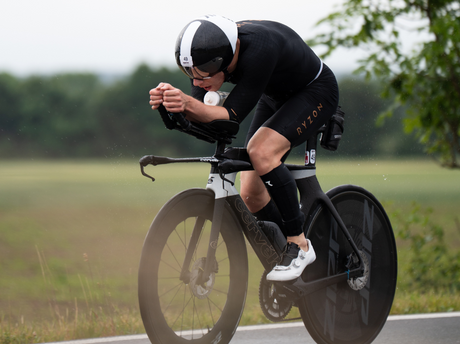In a study on ultramarathon events, 85% of participants stated that they had had gastrointestinal problems while running. One of the biggest problems in this context is therefore the food intake before and after the competition. But especially during long-term endurance events, the body needs enough calories to cover its energy needs. The current recommendations for exertion of up to two hours are 60 g carbohydrates per hour, if the exertion lasts longer, up to 90 g carbohydrates are even suggested hourly, with the requirement depending heavily on the intensity.
Causes of gastrointestinal problems in endurance sports
Most of the time during a race, the body is in a so-called steady state, i.e. a state of equilibrium in which our metabolism primarily uses fat, which it converts into usable energy using aerobic metabolic processes. However, this only works until he suddenly needs significantly more energy for a short time, which is the case, for example, with a long climb of 1000 or more meters in altitude or when trying to achieve a new best time. In this case, the metabolism has to produce a large amount of energy per time much faster (higher energy flow rate), which is only possible by burning carbohydrates. This process is known as aerobic or anaerobic glycolysis (carbohydrate metabolism with or without oxygen). Carbohydrates can be stored in the body in the form of glycogen, but the storage capacity is very limited compared to fat. Due to this physiological limitation, we are dependent on additional carbohydrate intake during exercise, which can be carried out using energy drinks and blocks, gels and bars.
However, this is exactly where the problem begins for many athletes: In order to absorb and process this food, our body has to digest it while running. However, this additional strain on the gastrointestinal system leads to an unpleasant feeling of fullness, abdominal pain, nausea and diarrhea to the point of vomiting in many runners. These symptoms even increase with increasing load duration and higher outside temperatures. On the one hand, this is due to the fact that the food passes through the gastrointestinal tract only slowly during exercise and is therefore exposed to the shocks for a longer period of time. In addition, its blood flow is reduced during athletic activities: The blood with its oxygen is particularly needed in the muscles.
Training tips for the digestive system
The good news, however, is that we are not helplessly exposed to this problem. Our digestive system, like our muscles, can be trained. Here's how this works best:
- Start your adjustment phase by going for a run every now and then immediately after eating. You should gradually increase and vary the amount of food eaten beforehand so that your stomach can get used to the mechanical stress and shock and you get a feel for what it feels like to run with a full stomach. First, choose a route that you can break off at any time and go home if problems arise.
- Consciously increase the amount of carbohydrates in your diet over time, especially on your training days, and consciously plan your meal accordingly.
- There are different types of carbohydrates that our body can absorb differently. The reason for this is that the different sugar molecules each use very specific transporters to get into the cell. The better the body can utilize its transporter capacity, the higher the carbohydrate absorption into the blood. Since every body is different and every product (gel, bar, etc.) has a different composition, you should try different products in advance and test them for compatibility. You can find the proportion of each type of sugar (glucose, fructose, maltodextrin, etc.) in the list of ingredients on the back.
- No experiments on race day. Everything you want to eat at your competition, you should definitely have tested beforehand. Simulate race day, start at the same time with the same breakfast, lunch, dinner (depending on when the start is). Run at the same intensity and if possible in comparable terrain. This is the only way to find out what works and what doesn't and avoid any nasty surprises on the day of the competition.
- It can make sense to incorporate these routines into your training more frequently and regularly to find out what works for you. There is no standard recipe here, because every person and every gastrointestinal tract is different.
Sporthunger tip: We usually also sell our sports nutrition in individual packs, so just try out different options and find out what suits you best.
Author: Dr. Alan Medcalf (PhD Exercise Physiology) - Coach at Twopeaksendurance
Sources
- Costa et al. (2016) The impact of gastrointestinal symptoms and dermatological injuries on nutritional intake and hydration status during ultra marathon events. Sports Med Open 2:16.
- Jeukendrup AE (2017) Training the gut for athletes. Sports Medicine 47 (Supp1): S101-110.









